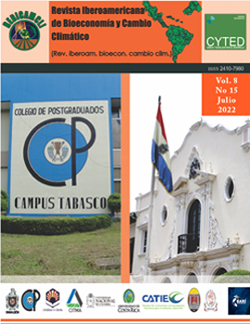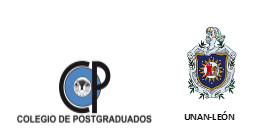Effect of planting densities on the phenological-productive development of Corn Crop (Zea mays) in Biointensive beds
DOI:
https://doi.org/10.5377/ribcc.v8i15.14332Keywords:
Corn, Biointensive, Densities, Climate Change, Food SecurityAbstract
The objective of the research was to evaluate the phenology and yield of corn (Zea mays) Creole variety in three planting densities. The completely randomized block design, with three treatments, in beds prepared with the biointensive method. The planting densities studied were T1: 120 plants/10 m2, T2: 100 plants/10 m2 and T3: 80 plants/10 m2. In the three treatments, the sample was 75 plants in total, in other words, 25 plants were chosen randomly per treatment. In the phenological variables: height, T1 stood out with an average height of 304.44 cm; plant stem diameter T3 obtained the highest percentage with 4 cm; Similarly, in number of leaves, T3 with an average of 17 leaves was the treatment that presented the greatest amount. In the number of fruits, it is observed that T3 presents better results with 4 ears per average plant; weight of the cob with gopher, the one that obtained a higher value was T3 with 292.8 gr, also when weighed without gopher (T3: 230.74 gr). According to the analysis of variance, there is a significant difference between the treatments (p<0.05) in terms of the production variables. Therefore, it can be concluded that, in order to achieve a production of plants with a rigid stem, a good quantity of fruits, as analyzed above, it is recommended to use treatment three (80 plants/10m2). We recommend that research should be carried out with other crops of importance to producers and people who are interested in the biointensive method.
Downloads
1031
HTML (Español (España)) 0
Published
How to Cite
License
Copyright (c) 2022 Rev. iberoam. bioecon. cambio clim.

This work is licensed under a Creative Commons Attribution-NonCommercial-ShareAlike 4.0 International License.
Copyright © Rev. iberoam. bioecon. climate change (Graduate School and UNAN-León, School of Agricultural and Veterinary Sciences / Department of Agroecology / Center for Research in Bioeconomy and Climate Cahnge (CRByCC).







